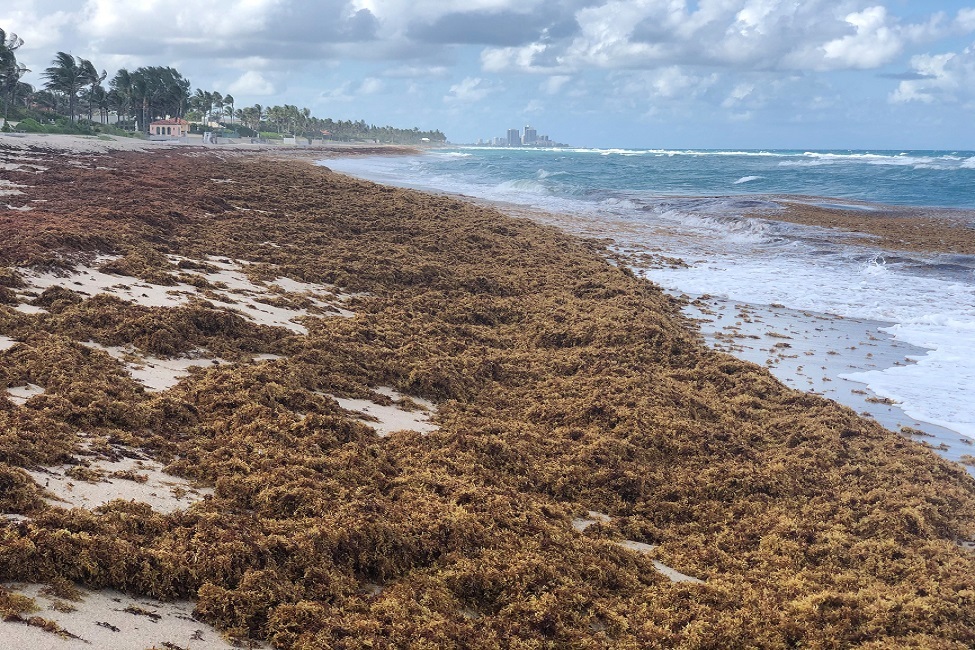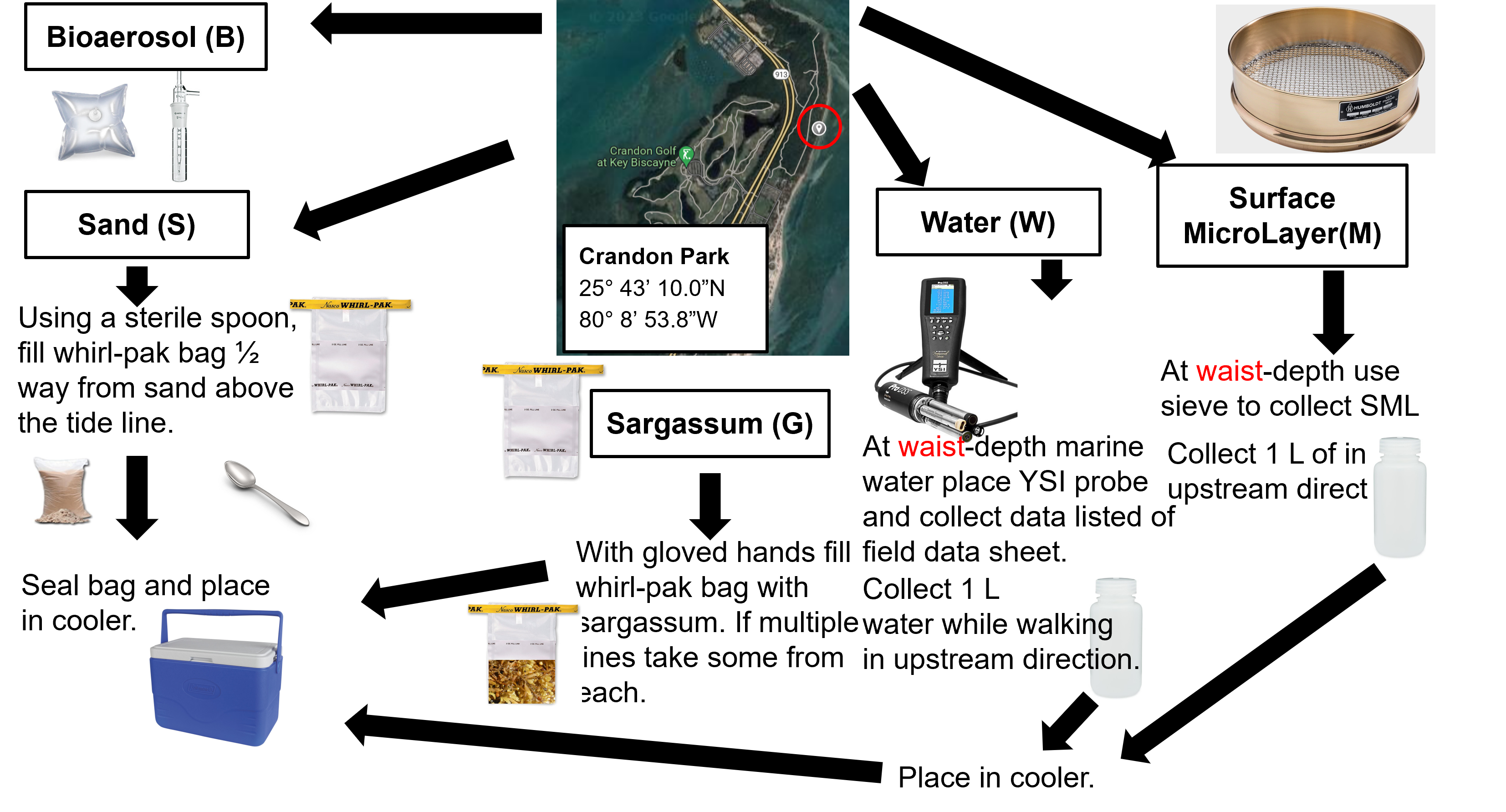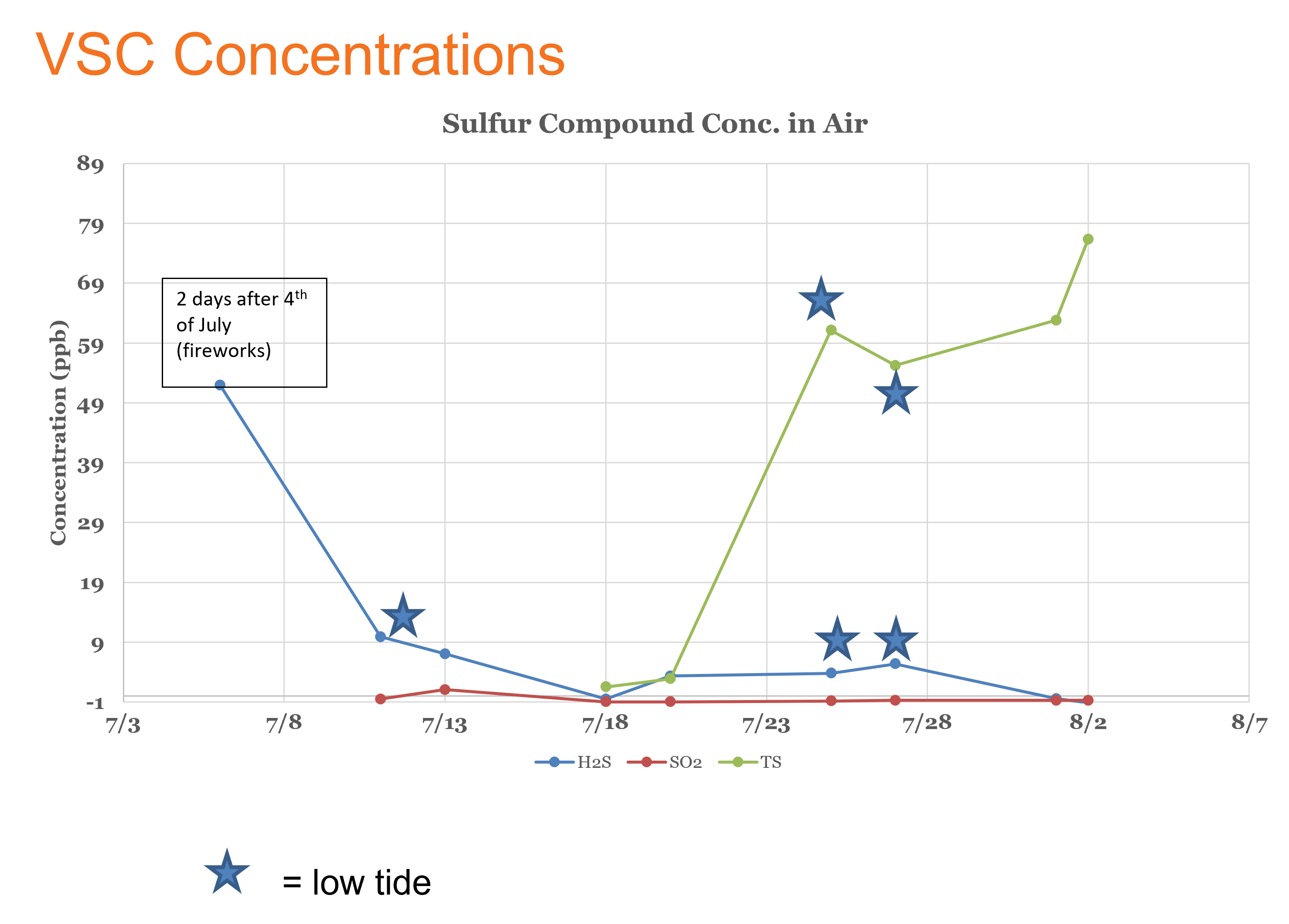Our group is collaborating with multilpe professors and researchers in studying how stranded Sargassum could influence the air, water, and sand quality.

Sargassumis a type of leafy, rootless and buoyant algae that bunch up in islands and floats around the ocean. After the Sargassum is stranded and piles up on the beach, they start to emit toxic and irratating gases. Hydrogen sulfide (H2S) is the major air pollutant associated with Sargassum strandings. It is generated when the Sargassum decays onshore, becoming anaerobic when piles are large and unmanaged, especially when quantities overwhelm the community’s ability to dispose or recycle it. The H2S, when generated, has a strong irritating smell that can cause acute respiratory symptoms. In 2018 at the Caribbean islands of Martinique and Guadeloupe beaches (2,000 miles east of the U.S. coast), H2S was documented to have increased by four orders of magnitude from 0.001 ppm (1 ppb) ambient background to 10 ppm, leading to thousands of clinical visits.
Another concern associated with Sargassum strandings is the potential increase in bioaerosol concentration associated with Sargassum decomposition. Previous research has shown that during Sargassum stranding events, near-shore water samples revealed spiking levels of enterococci in sand and water due to Sargassum decay. The concentration levels of other bacteria may also increase due to excess nutrients in the water. This bacteria-rich water can suspend bacteria into the atmosphere as bioaerosols.

Despite its potential harm, there is still limited understanding of the scale and duration of air pollutant emissions associated with Sargassum decomposition. Previous research has primarily focused on the impact of Sargassum stranding on near-shore water quality and direct ecosystem impacts (such as turtle mortality) rather than air quality. However, airborne pollutants can spread and pose threats to populations living along the coast. Therefore, it is crucial to gain a better understanding of the risks associated with Sargassum strandings to mitigate its impacts and protect the environment and local communities.
In the summer of 2023, the expected accumulation of stranded Sargassumwas absent. However, with the NSF support, we successfully devised a comprehensive protocol for gathering, processing, and scrutinizing field samples. Despite the limited presence of stranded Sargassum during the Sargassum season, we made a noteworthy discovery: an increased concentration of sulfur-containing gases compared to the urban background levels. Furthermore, our preliminary findings indicate the recovery of Enterococci bacteria primarily from both Sargassum and seawater samples.









